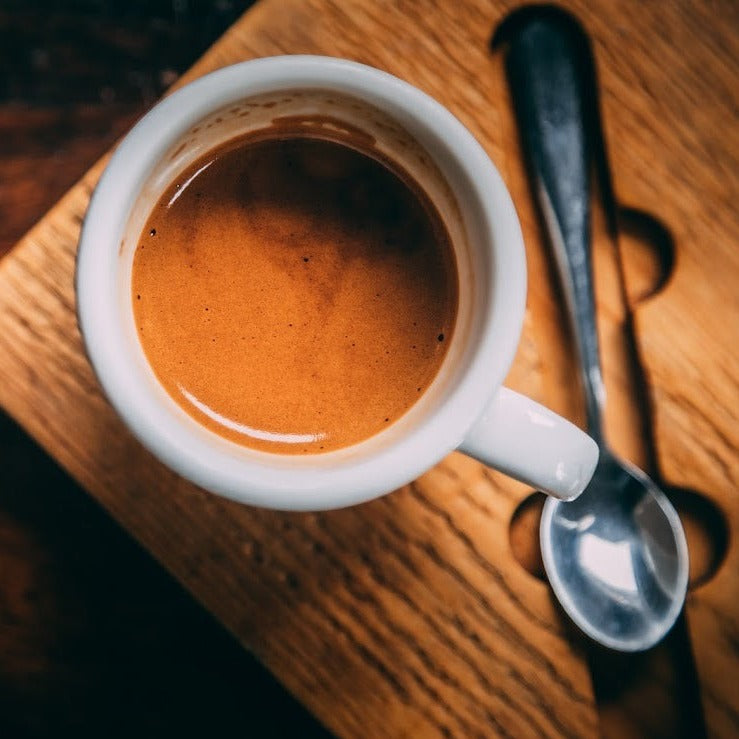Expert Advice to Get the Best Out of SOE Single Origin Espresso
Expert Advice to Get the Best Out of SOE Single Origin Espresso
Blog Article
Recognizing Coffee Beans: the Journey From Espresso to Blended Coffee Beans

The Beginnings of Coffee: A Worldwide Perspective
While you might believe of coffee as a modern-day staple, its origins map back centuries, intertwining with cultures throughout the globe. The tale begins in Ethiopia, where legend says a goat herdsman called Kaldi discovered the invigorating effects of coffee beans after discovering his goats romping vigorously after consuming them.
As profession routes expanded, coffee made its means to Europe in the 17th century, quickly acquiring appeal. Each society included its special spin to coffee prep work, improving its background.
Cultivation and Harvesting of Coffee Beans
As coffee's trip evolved, the focus shifted to the cultivation and harvesting of particular bean varieties, particularly those utilized for espresso. You'll find that espresso beans typically come from Arabica or Robusta plants, each offering distinctive tastes. The perfect growing problems consist of high altitudes and rich, well-drained dirt, which boost the beans' top quality.
Throughout the harvest, choosing approaches vary. In some areas, employees hand-pick ripe cherries, making certain just the most effective fruit mosts likely to handling. In other locations, mechanical farmers are utilized, particularly on larger farms. Timing is vital; you desire to collect when the cherries reach peak ripeness for optimum taste.
As soon as collected, the beans are gotten ready for handling, which is crucial in establishing their last taste. Understanding the cultivation and collecting procedures gives you insight right into what enters into your favorite coffee, improving your recognition for each and every mug.
Processing Approaches: From Cherry to Bean
Since you have actually learnt more about collecting coffee beans, let's discover exactly how those cherries transform right into the coffee beans you like. You'll see how various harvesting methods influence taste, complied with by the important actions of fermentation and drying. Finally, we'll damage down the milling and grading process that identifies your coffee's quality.
Harvesting Methods Discussed
When it comes to coffee, recognizing harvesting techniques is crucial, given that they directly influence the taste and high quality of the beans you delight in. There are two main techniques: discerning selecting and strip picking. Careful choosing entails hand-picking just ripe cherries, ensuring you get the most effective top quality beans. This method commonly leads to a richer flavor account, though it's even more labor-intensive. On the various other hand, strip picking ways collecting all cherries at as soon as, regardless of ripeness. While it's quicker and less expensive, this can result in a mix of tastes, impacting the last item. Inevitably, the selection of harvesting method can considerably affect your coffee experience, so it deserves knowing just how those beans made it to your cup.
Fermentation and Drying Out
After collecting, the following actions in processing coffee beans play a considerable role in shaping their flavor. You'll find that fermentation is vital, as it aids damage down the mucilage surrounding the beans, improving their taste profile. Depending on the approach, this procedure can last from a few hours to several days, with varying outcomes based upon temperature level and humidity.
Sun-drying enables the beans to absorb tastes from the environment, while mechanical drying guarantees regular moisture degrees regardless of weather condition. Proper drying is vital to prevent mold and mildew and preserve the beans' high quality, ultimately affecting your cup of coffee.
Milling and Grading Refine
As fermentation and drying established the stage for flavor advancement, the milling and grading procedure guarantees that just the finest coffee beans make it to your cup. This stage involves removing the external layers of the coffee cherry, consisting of the parchment and husk. High-grade beans obtain a higher quality, resulting in a richer coffee experience.
Roasting Methods: Unlocking Flavor Prospective
When you roast coffee beans, the technique you select can dramatically impact the flavor profile. Comprehending the connection in between time, temperature level, and roasting strategies is key to disclosing the potential of your mixture. Allow's discover exactly how these elements come with each other to produce the ideal mug.
Toasting Methods Clarified
While you may assume that all coffee roasting techniques generate the very same results, the truth is that each strategy discloses special taste potentials in the beans. You can select in between approaches like drum toasting, air roasting, or even traditional pan roasting. Drum roasting makes use of a revolving drum to equally distribute heat, boosting caramelization and generating a balanced flavor. Air roasting, on the various other hand, flows warm air around the beans, promoting a lighter roast with pronounced acidity. Pan roasting permits for hands-on control yet calls for constant attention to prevent burning. Each approach has its nuances, so exploring with various methods can help you uncover the excellent roast that straightens with your preference choices. Appreciate the trip of discovering your excellent mug!

Influence on Flavor Account
Various toasting techniques not only influence the process however likewise significantly affect the flavor profile of the coffee beans. Dark roasts, on the other hand, bring out bold, smoky flavors, often concealing the bean's one-of-a-kind characteristics. Understanding these subtleties go to these guys aids you appreciate the artistry behind your cup of coffee, boosting your overall experience with every sip.
Time and Temperature Level Factors
To launch the complete flavor capacity of coffee beans, both time and temperature during the toasting process play substantial functions. When toasting, you'll find that higher temperature levels can swiftly develop tastes, but if you rush it, you may wind up with burned notes. Alternatively, reduced temperatures enable a much more steady flavor growth, showcasing the beans' unique qualities.

Timing is equally as essential; prolonging the roast too long can lead to a loss of level of acidity and illumination, while too brief a roast may leave the beans underdeveloped. Finding that pleasant spot calls for method and testing. By adjusting these aspects, you can reveal the abundant, complicated tastes concealed within each bean, producing an absolutely amazing coffee experience.
The Art of Mixing: Crafting Distinct Coffee Accounts

Beginning by choosing a base coffee that gives a strong foundation. An intense Ethiopian bean can bring fruitiness, while a rich Brazilian coffee includes body.
As you blend, bear in mind that each combination narrates. You're not just making coffee; you're producing an experience. So, take your time, taste regularly, and delight in the trip of discovering your trademark blend.
Brewing Methods: Just How Preparation Affects Flavor
Blending coffee opens up a domain name of flavor possibilities, but just how you make that blend can significantly influence your last mug. On the various other hand, a pour-over highlights the coffee's quality and illumination, excellent for showcasing fragile notes.
Coffee, with its high pressure, produces a focused shot that accentuates sweet taste and crema. If you like a lighter mixture, take into consideration a cool brew approach; it produces a smooth, much less acidic preference.
Ultimately, testing is crucial. Readjusting variables like water temperature level, grind dimension, and brew time can change your coffee's account. Embrace the art of developing to uncover the tastes hidden in your coffee blends. The right approach can raise your experience to new elevations.
The Future of Coffee: Sustainability and Advancement
As the coffee industry evolves, sustainability and technology are coming to be necessary for attending to environmental challenges and conference customer demands. You'll observe that even more coffee companies are embracing green practices, from sourcing beans ethically to carrying out lasting farming techniques. These shifts not only assist the earth but likewise improve the top quality of the coffee you take pleasure in.
You could see advancements like biodegradable packaging and water-saving developing methods that minimize waste. Advanced technology, such as blockchain, is likewise becoming prominent, guaranteeing transparency in the supply chain, which enables you to trace your coffee back to its beginnings.
In addition, purchasing local neighborhoods and sustaining farmers with reasonable profession initiatives fosters a more lasting coffee ecosystem. As you sip your following cup, bear in mind that your options can contribute to a brighter future for coffee. By going with sustainable brands, you're not Learn More simply taking pleasure in a drink; you're making a favorable influence on the world.
Frequently Asked Concerns
What Is the Difference In Between Arabica and Robusta Beans?
Arabica beans are smoother, sweeter, and have a higher acidity, while robusta beans are stronger, more bitter, and include even more high levels of caffeine. You'll discover these differences in flavor and scent when making your coffee.
How Does Elevation Affect Coffee Bean Taste?
Elevation influences coffee bean flavor substantially. Higher altitudes generate beans with brighter level of acidity and complex flavors, while lower altitudes frequently generate beans that are much heavier and much less nuanced. You'll see these distinctions in your mug!
What Are the Health Advantages of Alcohol Consumption Coffee?
Drinking coffee can boost your energy, boost mental focus, and even enhance physical performance. It's rich in anti-oxidants, might decrease the threat of certain conditions, and can promote a much healthier metabolic rate when consumed in moderation.
Can Coffee Beans Be Recycled for Brewing?
Yes, you can reuse coffee beans for developing, but the flavor could be weaker. If you take pleasure in experimenting, try recycling them in different methods, like cool brews or adding to smoothie mixes for an additional kick.
How Should I Store Coffee Beans for Quality?
To about his keep your coffee beans fresh, keep them in an airtight container in a trendy, dark area. Prevent exposing them to dampness, warm, or light, as these aspects can quickly degrade their flavor and scent.
Recognizing Coffee Beans: the Journey From Coffee to Blended Coffee Beans.
Currently that you've learned regarding collecting coffee beans, let's explore how those cherries transform into the coffee beans you enjoy.When you roast coffee beans, the method you choose can significantly influence the flavor account - Single Origin Espresso.While you might think that all coffee roasting methods generate the same outcomes, the reality is that each method discloses distinct taste possibilities in the beans.Various toasting techniques not only influence the process but additionally substantially impact the flavor account of the coffee beans
Report this page